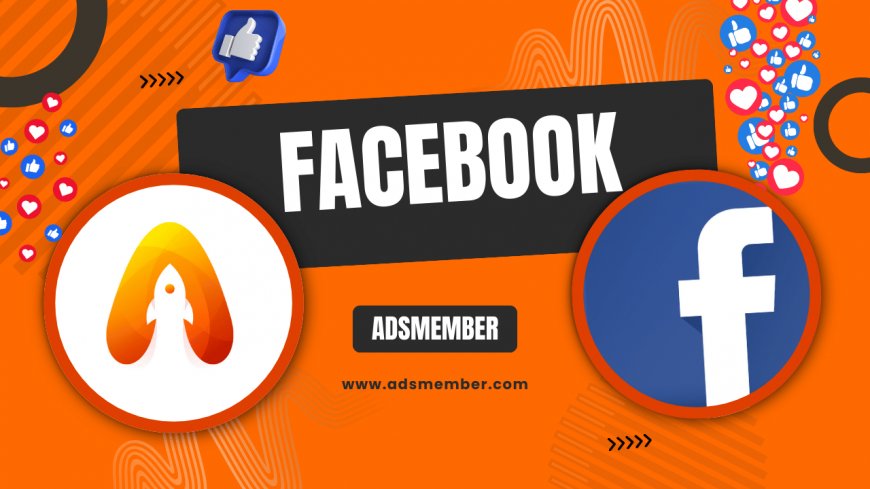How to Delete Your Facebook Account: A Step-by-Step Guide
Learn how to delete your Facebook account permanently with this easy guide. Follow step-by-step instructions to protect your data and ensure a smooth exit from…

Deciding to delete your Facebook account can feel like a big step. Honestly, I’ve been there—torn between staying connected and reclaiming my privacy. Whether it’s the endless notifications, data concerns, or just wanting a digital detox, walking away from the platform is a personal choice. In my opinion, it’s empowering to take control of your online presence. This guide will walk you through how to delete your Facebook account permanently, with detailed steps, unique tips, and insights from my own experience. Let’s dive into the process and ensure your data is handled safely.
Why Delete Your Facebook Account?
Before we get into the ‘how,’ let’s talk about the ‘why.’ For many, it’s about privacy. With over 2.9 billion monthly active users as of 2023 (source: Statista, Statista), Facebook holds a massive amount of personal data. Others might feel overwhelmed by the platform’s algorithm-driven content. Personally, I found the constant ads intrusive. Whatever your reason, deleting your account can be a fresh start.
Deactivation vs. Deletion: What’s the Difference?
Facebook offers two options: deactivation and permanent deletion. Deactivation temporarily hides your profile—you can return anytime. Deletion, however, is final. After 30 days, your data is gone (though some residual info may linger in backups). I chose deletion for a clean break. Knowing the difference helps you make an informed choice based on your needs.
Things to Do Before Deleting Your Account
Before you hit that delete button, take a moment to prepare. Honestly, I wish I’d done this sooner—it saves headaches. You’ve likely got photos, messages, or connections you don’t want to lose. Facebook allows you to download your data, and trust me, it’s worth the few minutes. Plus, you’ll need to handle any linked apps or pages. Let’s break this down.
Download Your Facebook Data
Facebook stores everything—posts, photos, even your ad preferences. To save this, go to ‘Settings & Privacy,’ click ‘Your Facebook Information,’ and select ‘Download Your Information.’ Choose the data range and format (HTML or JSON). It took me a day to get my file, but seeing years of memories was oddly nostalgic. This step ensures you don’t lose anything precious.
Check Linked Accounts and Apps
Many apps use Facebook for login. Before deletion, unlink them or switch to email logins. Also, if you manage pages or groups, assign new admins. I once forgot this and lost access to a small business page—don’t make my mistake. Check under ‘Apps and Websites’ in settings to see what’s connected.
How to Delete Your Facebook Account: Step-by-Step Guide
Now, let’s get to the main event—deleting your account. Facebook doesn’t make it super obvious (no surprise there), but I’ve got you covered with a clear, detailed process. Follow these steps, and you’ll be free in no time. I’ve done this myself, so I know the quirks to watch for.
Follow These Steps to Permanent Deletion
- Log into your Facebook account on a browser or app.
- Click your profile picture in the top right, then select ‘Settings & Privacy’ > ‘Settings.’
- Navigate to ‘Your Facebook Information’ on the left sidebar.
- Click ‘Deactivation and Deletion’ at the bottom of the page.
- Choose ‘Delete Account’ (not deactivation) and click ‘Continue to Account Deletion.’
- Enter your password to confirm, then hit ‘Delete Account.’
- Don’t log back in for 30 days—logging in cancels the deletion!
Pro tip: Take a screenshot of the confirmation page. I did this for peace of mind, knowing I had proof of initiating the process.
What Happens After Deletion?
Once you’ve started the deletion, Facebook gives you a 30-day grace period. If you log in during this time, the process stops. After 30 days, most of your data—posts, photos, comments—gets wiped. However, some info (like messages sent to others) may remain. I found it unsettling that not everything vanishes, but that’s social media for you. Check Facebook’s help center for full details on residual data.
Can You Recover a Deleted Account?
Within the 30 days, yes—just log back in. After that, it’s gone for good. I nearly logged in out of habit on day 10 but caught myself. Set a reminder to avoid accidental logins, especially if you use auto-fill passwords on your browser.
Unique Tip: Protect Your Privacy Post-Deletion
Here’s a tip you won’t find everywhere: even after deletion, create a new, minimal profile with the same email (if possible) to block others from using your old identity. I did this as an extra layer of security. Also, update privacy settings on other platforms like Instagram (Instagram Tips) to avoid data leaks across networks. It’s a small step, but it gave me peace of mind.
FAQ: Can I Delete My Account Without Waiting 30 Days?
No, Facebook enforces a mandatory 30-day waiting period for permanent deletion. This is their policy to prevent impulsive decisions. I found it frustrating, but it does give you time to reconsider or retrieve data. Just avoid logging in during this time to ensure the process completes.
FAQ: Will Deleting My Account Remove All My Data?
Not entirely. While most of your content (posts, photos) gets deleted after 30 days, some data—like messages in others’ inboxes—may persist. Facebook states it can take up to 90 days to fully erase backup data. Check their Data Policy on Facebook’s official site for specifics. It’s a bit unnerving, I know.
FAQ: Can I Delete My Account from the Mobile App?
Yes, the process is similar. Open the app, tap the menu (three lines), go to ‘Settings & Privacy’ > ‘Settings’ > ‘Personal and Account Information’ > ‘Account Ownership and Control’ > ‘Deactivation and Deletion.’ Select ‘Delete Account’ and follow the prompts. I found the app interface a bit clunky, so a browser might be easier.
FAQ: What If I Manage a Business Page?
If you’re the sole admin of a page, assign someone else as admin before deleting your account, or the page becomes inaccessible. Go to ‘Page Settings’ and add a trusted person. I learned this the hard way—don’t skip it if your business relies on Facebook!
What's Your Reaction?
 Like
0
Like
0
 Dislike
0
Dislike
0
 Love
0
Love
0
 Funny
0
Funny
0
 Angry
0
Angry
0
 Sad
0
Sad
0
 Wow
0
Wow
0


















































